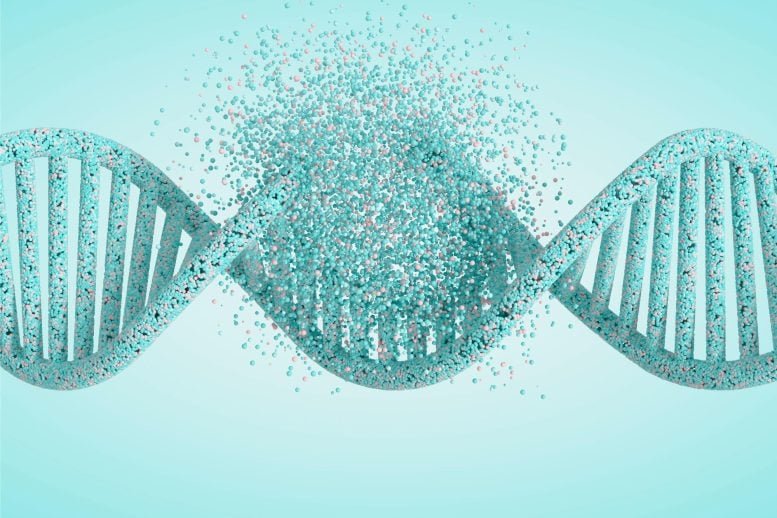
Understanding Cell Aging
Cell aging, a complex biological process, significantly affects overall health and longevity. At the heart of this phenomenon are several key mechanisms, including telomere shortening, oxidative stress, and cellular senescence. Telomeres, the protective caps at the ends of chromosomes, play a pivotal role in maintaining cellular integrity. With each cell division, telomeres shorten, eventually leading to cell dysfunction and death. This gradual decline in telomere length correlates strongly with the aging process, rendering cells less capable of dividing and performing their functions over time.
Oxidative stress is another critical factor contributing to cell aging. This imbalance between free radicals and antioxidants results in cellular damage, impacting various components, such as lipids, proteins, and DNA. Over time, the accumulation of oxidative damage can lead to the activation of cellular stress responses, accelerating the aging process. The implications of oxidative stress suggest that maintaining a delicate balance is essential for cellular health and longevity.
Moreover, cellular senescence represents another vital aspect of aging. Senescent cells, although metabolically active, lose their ability to divide and function properly. They tend to secrete pro-inflammatory factors, contributing to the aging of surrounding tissues and promoting age-related diseases. The clearance of these senescent cells holds promise for enhancing healthspan, the period of life spent in good health, as research indicates that their accumulation is linked to various age-associated conditions.
Understanding the biological processes behind cell aging is crucial for scientific research and potential anti-aging interventions. By exploring these mechanisms, researchers aim to develop strategies that target cellular aging, potentially leading to effective treatments that can enhance longevity and improve overall health. As we uncover more about the intricate pathways of cell aging, the prospect of slowing down this natural process becomes increasingly tangible.
The Recent Discovery: A Revolutionary Method
Recent advancements in cellular biology have led to a groundbreaking discovery regarding the aging process of cells. A team of scientists has unveiled a novel method that significantly slows down cellular aging, presenting exciting implications for age-related health issues. At the core of this revolutionary method lies the manipulation of the cellular mechanisms responsible for the aging process, specifically targeting telomeres, which are the protective caps located at the ends of chromosomes. Over time, telomeres shorten, leading to cellular senescence and age-related diseases. By using a unique combination of genetic and biochemical techniques, the researchers were able to enhance telomere integrity and prolong the lifespan of cells.
In a series of meticulously designed experiments, the research team focused on specific compounds known to influence telomere maintenance. By applying these compounds in controlled lab environments, they documented observable increases in both telomere length and cellular function. The results indicated not only a delay in cellular aging but also an improvement in cellular health, as measured by enhanced proliferation rates and reduced markers of senescence. This affects numerous cell types, indicating a broader potential application across various tissues and organs in the body.
The team’s objectives extended beyond mere observation; they aspire to understand the underlying biological principles that facilitated this discovery. By elucidating the molecular pathways involved, the researchers aim to develop therapeutic strategies that can be translated from the lab into clinical settings. This discovery is particularly relevant in the larger context of aging research, where the quest to mitigate the effects of aging has garnered increased attention. The implications of this work may revolutionize approaches to health and longevity, fostering a deeper understanding of how cellular aging can be effectively slowed down.
Potential Applications and Implications
The breakthrough discovery of a method to slow down cell aging holds significant promise in various fields, particularly medicine, regenerative therapy, and overall wellness. As researchers delve deeper into the mechanisms of aging, this method could lead to transformative treatments for age-related diseases, such as Alzheimer’s, cardiovascular conditions, and diabetes. By targeting cellular aging, healthcare providers may soon offer therapies that not only halt the progression of these diseases but potentially reverse their effects, allowing patients to maintain a higher quality of life.
Moreover, the implications of this discovery can extend to regenerative therapy. Techniques that slow aging at the cellular level may enhance the body’s ability to heal and regenerate tissues, thereby improving recovery outcomes from injuries and surgeries. This could also open new avenues in organ transplantation, as maintaining organ viability could become more effective when aging processes are slowed down. Such advances have the potential to significantly reduce waiting times for transplants and improve the functionality of grafts.
In the realm of wellness, the extension of a healthy lifespan is gaining increasing attention. With effective methods to slow cell aging, individuals may experience not only increased longevity but also a prolonged period of vitality, reducing the burden of chronic ailments. However, while the prospects are exciting, ethical considerations must be taken into account. Issues surrounding access to such treatments, the potential for socioeconomic disparities, and the societal implications of extending life must be carefully navigated. Additionally, questions about the nature of aging itself, and the impact on population dynamics and resources, require thorough discourse. The road ahead promises to be rich with possibilities that could reshape our understanding of aging and health.
Future Directions in Anti-Aging Research
The recent breakthrough in understanding the mechanisms of cell aging opens up numerous avenues for future research in anti-aging and longevity. Researchers are now poised to explore a variety of pathways, focusing on how the newly discovered methods can be translated from laboratory settings into practical applications. Ongoing studies will likely delve deeper into the cellular processes that contribute to aging, utilizing innovative techniques to test the efficacy of the new methods on a broader range of biological systems.
One promising direction involves the establishment of clinical trials that will assess the safety and effectiveness of the discovered treatment in human subjects. These trials are crucial for determining how these techniques can be integrated into current healthcare protocols. Researchers will require rigorous data collection and analysis to ensure that the findings from basic research adequately translate into therapeutic interventions for age-related diseases.
Moreover, the importance of interdisciplinary collaboration cannot be overstated in advancing anti-aging research. The complex nature of aging demands a multidisciplinary approach that brings together experts from diverse fields, including molecular biology, genetics, pharmacology, and gerontology. By fostering collaborative partnerships, scientists can share insights and methodologies, potentially accelerating the pace of discovery and innovation.
This recent discovery serves as a catalyst for further innovations in aging research, inspiring new hypotheses and investigations. The scientific community must also emphasize the need for continued funding and support, recognizing that translating groundbreaking laboratory findings into real-world solutions requires significant financial resources. Engagement with funding agencies, private investors, and governmental bodies will be essential to propel these efforts forward, ultimately aiming to improve the quality of life and longevity for future generations.




